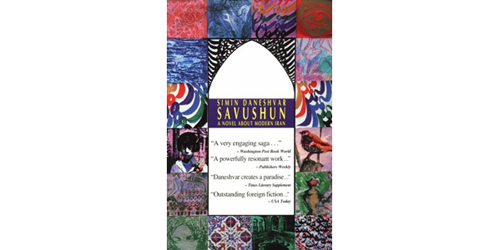
- Savushun (Suvashun)
- Author: Simin Daneshvar
- Publication Date: 1969
- Available in other languages: Yes
- [tr. M. R. Ghanoonparvar, Savushun, A Novel About Modern Iran, 1990; and Roxane Zand, A Persian Requiem, 1991]
- Area: Contemporary Iranian Novel
“What’s the use of peace based on deceit? The body of mankind is fragile, but no force in this world can be as strong as the force of human soul when it is determined and sagacious. Not a single star, but a thousand stars will illuminate his mind, aware that he will fear nothing and no one any more. Do not weep, my sister. There will grow a tree in your house, and trees in your city, and trees of trees in your homeland. And the wind will carry every tree’s message to the other tree. And the trees will ask the wind, “On your way here, haven’t you seen the dawn?”
About the Book
Set in Shiraz, ‘Savushun’ is an account of a woman’s life with her well-off feudal husband who, unlike his peers, is devoid of avarice, gives a hand to his peasants, and enjoys an illuminated mind and a transparent happy life. They live in a period of nationwide drought when the country is occupied by foreign military forces as they plunder the inhabitants’ possessions. The husband’s resistance and protest on the one hand and the wife’s deference and peacemaking get in line as a structural feature of this family. The husband is murdered during the succession of events and the wife, having lost the structural unity of her family, undergoes a change of attitude towards herself and the society whose actions and reactions are now well-thought and based on her learned wisdom.
Savushun is a superb piece by Simin Daneshvar, master of storytelling, which offers a well-engineered narrative of a woman’s social and personal growth. At the heart of this narrative, Daneshvar presents a scrupulous and systematic observation of her environment and the country as effective factors on her personality. The narrative revolves around the female character, Zari, who is the first person narrator of the story. The diffuse interior monologues also serve complementary to the unity of the text. Daneshvar’s robust symbolism is another element of marvel in the work. The woman’s alternative presence within home and out in society functions as a harmonizing device that leaves no room for unwanted gaps in narration. As the story moves on, every character could be taken as representative and symbol of a particular ideology whose actions are often rooted in that inherent worldview.
Translated from Persian by Farzaneh Doosti


Leave a Reply